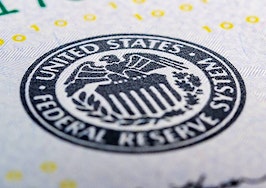- Pending home sales have now risen year-over-year for 12 consecutive months.
- The PHSI for August decreased 1.4 percent to 109.4 in August from 110.9 in July, but is still 6.1 percent above August 2014’s index of 103.1.
- Demand continues to outpace housing supply and elevate price growth in numerous markets.
Although pending home sales backslid slightly in August, housing is still in short supply and home prices continue to climb in many markets, according to the National Association of Realtors’ (NAR) latest Pending Home Sales Index (PHSI).
According to the PHSI, a forward-looking indicator based on contract signings, pending home sales have now risen year-over-year for 12 consecutive months. The PHSI for August decreased 1.4 percent to 109.4 in August from 110.9 in July, but is still 6.1 percent above August 2014’s index of 103.1.
An index of 100 is equal to the average level of contract activity during 2001, which was the first year for the PHSI.
But even with the modest decline in contract signings, demand continues to outpace housing supply and elevate price growth in numerous markets, said NAR Chief Economist Lawrence Yun.
“Pending sales have leveled off since mid-summer, with buyers being bounded by rising prices and few available and affordable properties within their budget,” he said. “Even with existing-housing supply barely budging all summer and no relief coming from new construction, contract activity is still higher than earlier this year and a year ago.”
“Even with existing-housing supply barely budging all summer and no relief coming from new construction, contract activity is still higher than earlier this year and a year ago.” – NAR Chief Economist Lawrence Yun
Drilling down on geographic trends, NAR said a modest increase in the West was offset by declines in all other regions.
The index in the West rose 1.8 percent in August to 104.9, and is now 7.6 percent above a year ago. The PHSI in the Northeast fell 5.6 percent to 93.3 in August, but is still 8.9 percent above a year ago. In the Midwest, the index inched down 0.4 percent to 107.4 in August, and is now 6.5 percent above August 2014. Pending home sales in the South declined 2.2 percent to an index of 121.5 in August, but are still 4.1 percent above last August.
Looking ahead to the fall season, Yun predicted that sales will be continue at their current pace, but said the housing market faces other challenges.
“The possibility of a government shutdown and any ongoing instability in the equity markets could cause some households to put off buying for the time being,” adds Yun. “Furthermore, adapting to the changes being implemented next month in the mortgage closing process could delay some sales.”
The national median existing-home price is expected to increase 5.8 percent in 2015 to $220,300. Yun forecasts total existing-home sales this year to increase 7 percent to around 5.28 million, about 25 percent below the prior peak of 7.08 million set in 2005.








